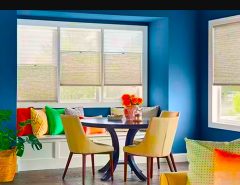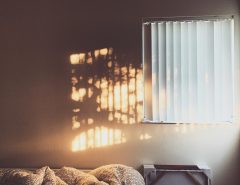History of Stained Glass Windows
No one really knows when the first stained glass windows were created or how. Historians do know that by the 10th-century churches located in Europe were beginning to display beautiful biblical scenes and decorative designs.
Theophilus, a 12th-century monk, wrote a stained glass guide for craftsmen. In it, he describes the method of measuring, creating and assembling stained glass windows, a technique that has not changed in the centuries since.

During the Gothic age, the magnificent cathedrals were being built in Europe and stained glass windows had reached the pinnacle of their popularity. As the technology of the time allowed the buildings to be taller and thinner, stained glass was used to fill the openings. Over a period of time the size of the openings, as well as the number of dichroic glass windows increased and became more extravagant. There was a philosophy that beauty would bring men closer to God.
In the mid-1800s, the Gothic revival brought the stained glass back into vogue. With the interest in Gothic architecture architects and artisans wanted to re-create the ethereal beauty of the old glass. Scientists tested the glass to find the secrets of the glassmakers of long ago. Historians scoured old books for descriptions of technique, and artists practiced the art until they unlocked its beauty.
The Bolton brothers were artisans that immigrated from England to America during this time. They established a stained glass studio, one of the first on North American shores. As they created copies of the Gothic Revival windows that were being created in Europe they were also helping to create a uniquely American style. These first American stained windows were in high demand for churches and public buildings. As the middle class developed, however, the demand for the ornate windows in private residences increased.
Men like LaFarge and Tiffany developed incredible techniques that allowed a wide range of effects in the glass. LaFarge copyrighted his new invention, opalescent glass, in 1879. Tiffany used the opalescent glass to enhance his own designs even more and thus the golden era of stained glass in the United States began.
Stained Glass Use in Historic Homes
Eastlake, Art Noveau, and Arts and Crafts style houses were primarily the homes that held stained glass windows.
Stained glass was often found used in transoms, stairways, and sidelights. Occasionally an Eastlake home would have an unusually shaped window as a decorative accent. These were often round or half-round and could be found in the upper rooms of the home.
Transoms over interior doorways were often stained glass, as were the doors to built-in buffets and china cabinets. In Victorian homes, these designs would be more intricate, while in the Arts and Crafts bungalows made popular by Frank Lloyd Wright the designs were more geometric.
Many designs were popular but some of the ones you see the most often are:
- Diamond
- Rose
- Tulip
- Irises
- Triangles
- Fans
- Shells
Decorating with Vintage Stained Glass Windows
When you are restoring an old home it is hard to find stained glass windows that are the same sizes as the ones that may have been removed from your home. It can be done with patience, however, so keep your eyes open and your dimensions are written down. You can often replace them by keeping a close eye on architectural salvage companies and auctions, including eBay. However, there are other ways to incorporate the look of these windows into your vintage (or even contemporary) home.
- Make them over into cabinet doors
- Hang them in front of windows- use heavy-duty hooks
- Use as wall décor
- Make a tabletop
Cleaning Antique Windows
Cleaning the old windows, especially if you are cleaning one that has been stored in a barn for fifty years, must be done very carefully.
- Don’t use ammonia or commercial cleaners but use a diluted white vinegar solution.
- Have an old toothbrush, rags, cotton swabs, and razor blades on hand.
- Carefully use the razor blade to scrape off any old paint that might be on the glass.
- Spray the rag and gently wash off the accumulated dirt.
- Never use anything that could scratch the glass.
- Rinse carefully with water and allow it to dry.
- If there is dirt stuck next to the frame use the toothbrush, gently, to loosen it and then the cotton swab to remove it.
There is just nothing as beautiful as the afternoon sunlight streaming through antique stained glass windows and casting colors around a room. Collecting them can be addicting so be careful.
Tags: Glass Windows, History, Stained Glass Windows, Windows



Leave a Reply
You must be logged in to post a comment.